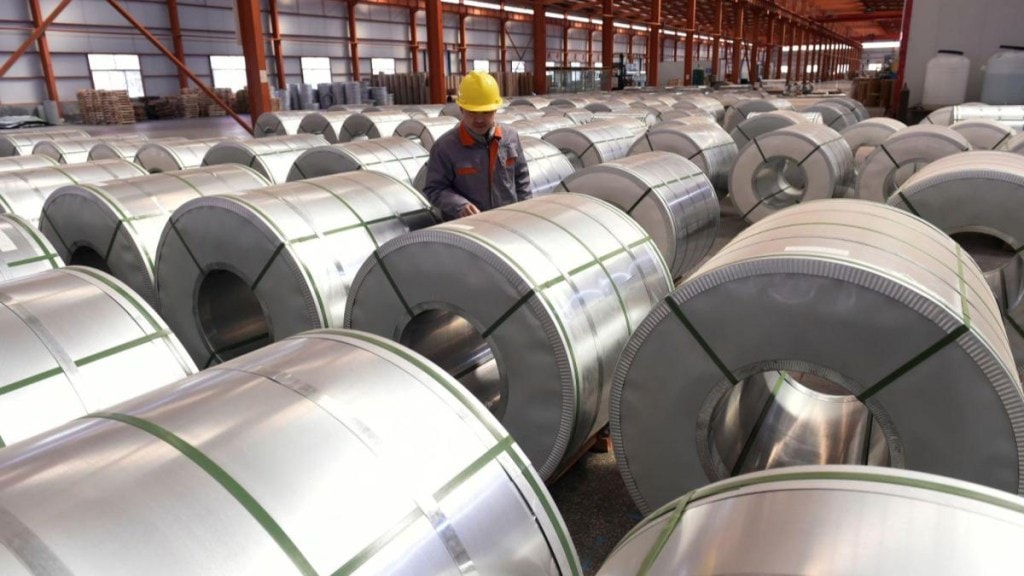– By Sunil Gupta
As India embarks on an ambitious clean energy journey, aluminium stands at the forefront of this transformation. Aluminium is playing a pivotal role in powering new domestic innovations across energy storage, transportation, and infrastructure development. With the country targeting 50% of electricity generation from renewable sources by 2030, aluminium is an important cornerstone of India’s changing energy landscape.
Be it wind energy, solar power or electric vehicles — the metal has established itself in a variety of roles. According to the International Aluminium Institute, the renewable energy industry will require an additional 5.2 million tonnes of aluminium by 2030. This is no surprise, given that the metal accounts for over 85% of the materials used in solar photovoltaic components, making it a key material for renewable energy infrastructure.
Currently, India is the world’s fourth-largest consumer of electricity, the demand for which will rise by 8% within this year itself and could grow at 10% annually in the future. To power India’s needs sustainably, the government is incentivising companies to enhance renewable energy capacity, improve grid infrastructure, and promote energy efficiency. Aluminium is critical to serve these initiatives well.
Powering Renewable Energy Infrastructure
Aluminium’s role in renewable energy has proven to be indispensable, across applications like solar panels, wind turbines, and hydroelectric installations. Solar panels rely heavily on aluminium for their frames and mounting structures. Aluminium is also gaining traction in innovative energy solutions such as floating photovoltaics, which offer enhanced buoyancy and efficiency. In marine energy applications, aluminium-bronze alloys are now used in wave energy converters and tidal turbines, thanks to their exceptional fatigue resistance.
As India shapes its policies towards encouraging more sustainable solutions, various public-private partnerships have come into effect to realise India’s green energy goals, especially in mega solar energy projects such as the Rewa Solar Project in Madhya Pradesh, one of the largest in the world. Furthermore, recent government actions, including the implementation of anti-dumping duties on aluminium frames for solar panels imported from China, are fostering a more robust environment for domestic manufacturing, strengthening the economy and reducing reliance on imports.
Energy storage is another area where aluminium is demonstrating its value. Aluminium-ion batteries, known for their high energy density and fast charging capabilities, are showing immense potential. Additionally, aluminium-air batteries, which do not require regular charging, are emerging as a game-changer for electric vehicles (EVs) and grid storage, with startups rapidly advancing their development.
Transforming the Electric Vehicle Market
As consumers become more aware and conscious of their consumption patterns, they are slowly switching to EVs to make more sustainable choices. Moreover, with advancing technologies in the space and government push in the form of the Production Linked Incentive (PLI) scheme for automobiles, EVs are expected to comprise one-third of India’s passenger vehicle market by 2030. These initiatives aim to bolster domestic supply chains to meet local demand, given that India is the third-largest automotive market in the world. Aluminium is set to help spur this transformation, providing the strength and reliability the industry needs to match the mastery of global automotive companies.
Importantly, aluminium is one of the most sustainable materials available, with more than 90% of the metal being reused at the end of a vehicle’s life cycle. Recycling aluminium also conserves 95% of the energy required to produce new metal, reinforcing its environmental and economic benefits, further driving the demand for green aluminium for EVs.
Challenges from Unfavourable Duty Policies
Despite these developments, the aluminium sector is facing significant challenges from surges in low-quality aluminium scrap imports, particularly from China, and from an inverted duty structure on essential raw materials used in production. The influx of imported scrap disrupts the domestic market, often flooding it with cheaper, lower-grade alternatives that undercut local manufacturers and stymie potential investments in the sector. Additionally, the inverted duty structure, where input costs are taxed higher than finished products, places an unnecessary financial burden on domestic producers, making it harder for the industry to remain competitive on a global scale. Tackling these challenges is essential for the industry’s sustainable growth and will unlock new opportunities for it to drive innovative renewable solutions.
To lead the way in clean energy solutions, developers have committed to boosting India’s non-fossil capacity by 570 GW, with a funding of about $386 billion for renewable projects by 2030 on its way. This influx of investment will promise substantial economic growth, and aluminium is set to herald India’s sustainable transformation, helping the nation play a crucial role in the global fight against climate change.
(Sunil Gupta is the COO at Vedanta Aluminium.)
(Disclaimer: Views expressed are personal and do not reflect the official position or policy of Financial Express Online. Reproducing this content without permission is prohibited.)
